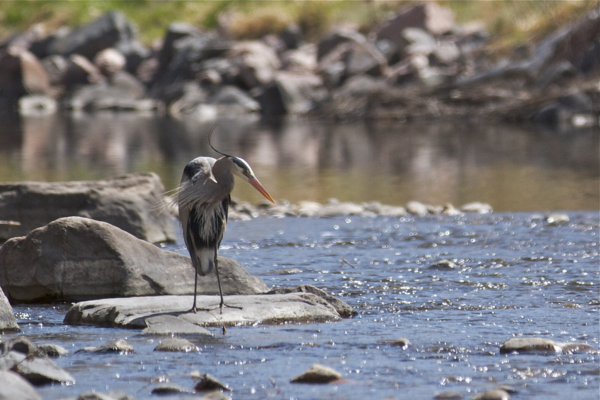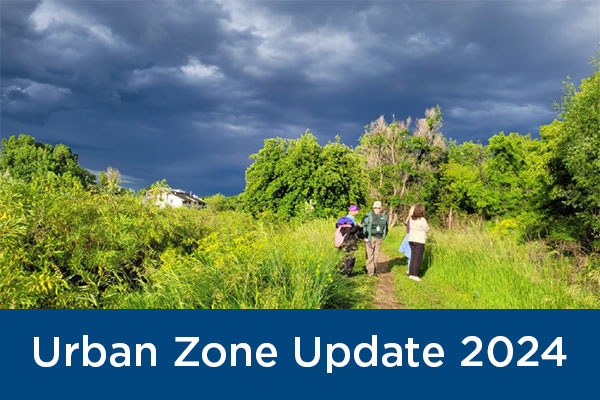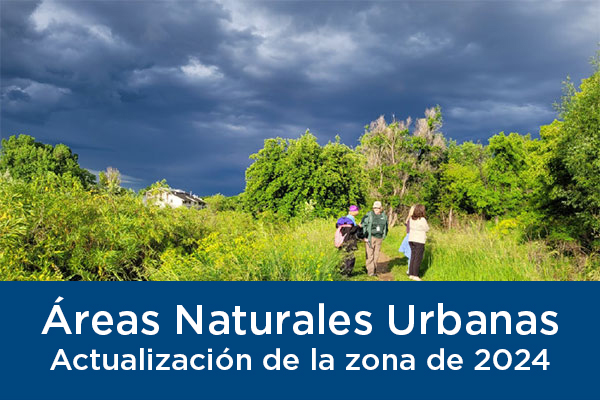Urban Zone#
The Urban Zone consists of ten natural areas that are within the heart of Fort Collins. These neighborhood natural areas are surrounded by many homes and the urban environment; hence they provide a critical respite for wildlife and people alike. Spring Creek Trail serves as an access and a connector between Tanglewood, Ross, Mallard’s Nest and The Coterie.
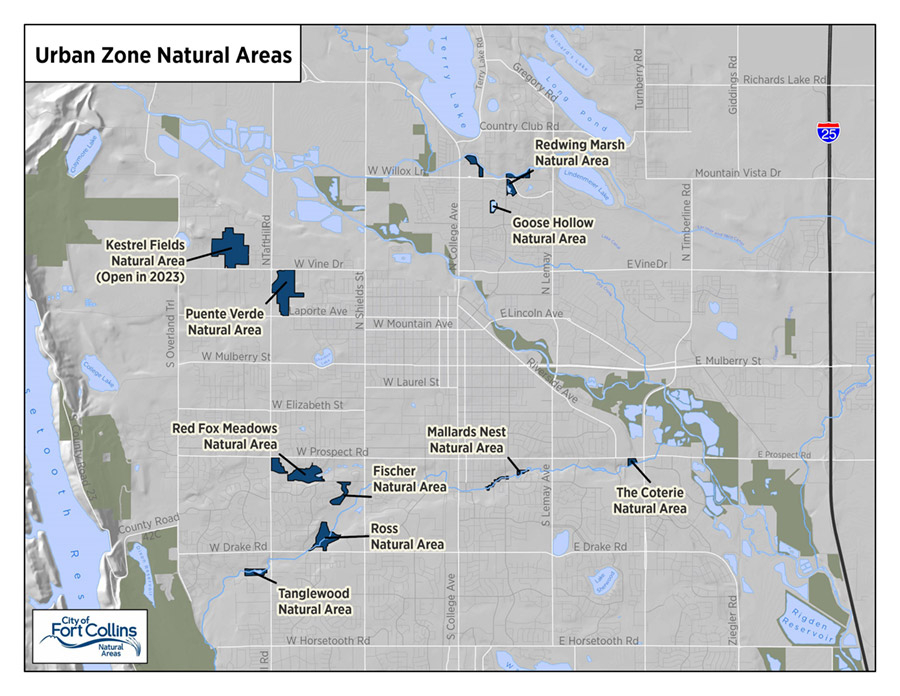
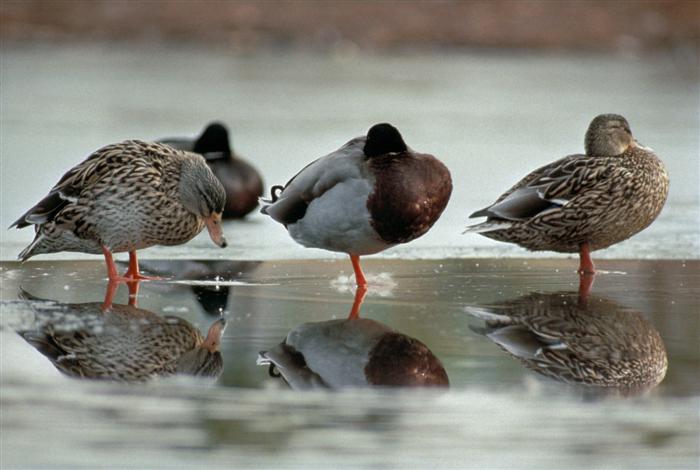
The Urban Zone includes ten publicly accessible natural areas ranging in size from 4 acres to 72 acres, conserving a total of 253 acres. Urban natural areas provide islands of habitat in the urban environment that benefit wildlife as well as people seeking a close-to-home connection with nature. All of the Urban natural areas serve a stormwater function to reduce flooding in nearby neighborhoods. Many sites are managed in part with the City’s Stormwater Utility. Some Urban natural areas still have a more rural feel as they are in parts of Fort Collins that are continuing to develop, giving a unique mix of environments within the Urban Zone natural areas.
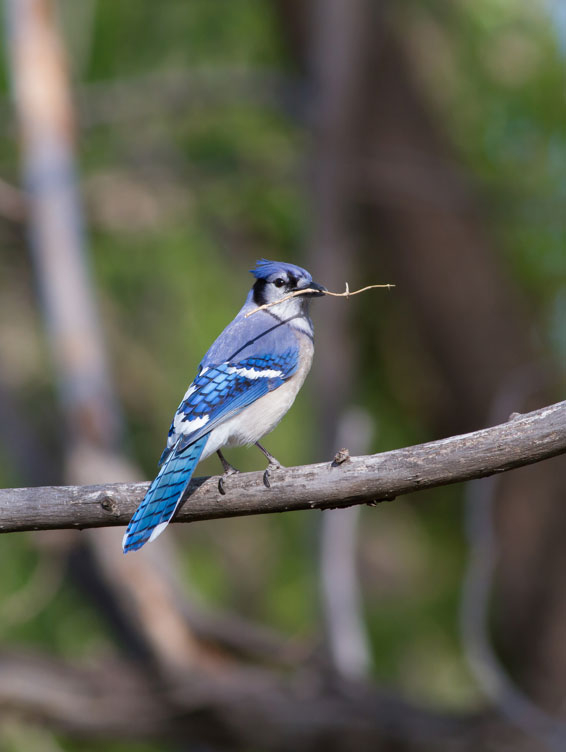
Blue jay, photo N. Keally
Visit each site page to learn about recreation opportunities, hours, and related information.
Current Condition#
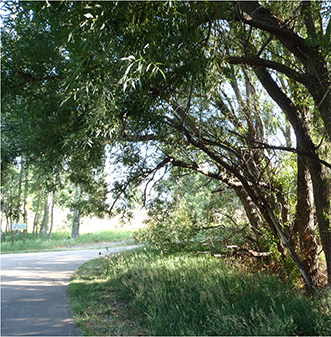
The ecological condition within the Urban Zone is not pristine, as one might expect given the urbanized nature of the sites. The agricultural history of early settlement of Fort Collins is reflected by the pervasiveness of smooth brome, a common hay field grass frequently utilized in agriculture. Smooth brome creates a homogenous understory that is difficult to remove and convert to a diversity of native species that could provide better habitat for many birds and pollinators, along with the wildlife that find these patches of natural space that provide some connectivity through the urban core. Brome grasses are also so aggressive that they do keep the noxious weeds at bay.
All the Urban sites have a water feature, either natural or human-made. The element of water adds to the quality of habitat along with the accompanying trees and shrubs water ways support. Overall, the quality vegetation is fair to good. These natural areas also contain protected remnant pockets where we now find a few rare plant species, as well as places for deer, fox, and many bird species to nest. Species that have been documented include 275 plants and over 100 wildlife. No threatened or endangered species have yet been documented; however, plants and wildlife have not been well surveyed in urban natural areas.
Pockets of natural space within an urban setting are significant for the wildlife that are less sensitive to human presence. Along with the City Natural Areas there are other public and private lands that contribute to this network that provides connectivity for wildlife movement and native plant persistence. These local natural areas provide the opportunity for residents to observe nature in their daily lives, adding to the possibility of recognizing the value of conservation and stewardship of our natural world.
Restoration#

While these are highly impacted natural areas, several restoration projects have been initiated over the years totaling in 22 acres. Altogether, the Urban Zone restoration areas are in 73% good to fair condition (meaning there is substantial native vegetation) with 27% of the area in poor condition as of 2020 monitoring.
The restoration at Red Fox Meadows is the most significant of the projects to date. It is a result of a successful partnership with the City’s Stormwater Utility in 2009-2011 as part of the Canal Importation and Ponds Outfall Project (CIPO). Fox dens and mature cottonwoods were preserved and a great diversity of native grasses, wetland plants, wildflowers, shrubs, and trees were planted to enhance wildlife habitat, all while achieving the flood protection and water quality goals of the project. The CIPO project was awarded the American Public Works Association Colorado Chapter annual award as the top Drainage and Flood Control Project in a Large Community. The native trees, shrubs and wetter areas are doing well, while the upland areas are becoming dominated by smooth brome.
Restoration at Redwing Marsh in 1999 added many native trees and shrubs around the stormwater pond and enhanced the wetland fringe around the pond. The wetland and shrubs are doing well. The upland understory is in poor condition.
Other restoration projects in the Urban Zone include reclaiming a tennis court at Mallard’s Nest in 2005, and several neighborhood groups volunteering to plant clusters of native shrubs at Ross. Restoration efforts have begun at Kestrel Fields Natural Area with the planting of many native shrubs with the help of dedicated volunteers in 2021.
Weed Control, Prescribed and Wildfire, Grazing#
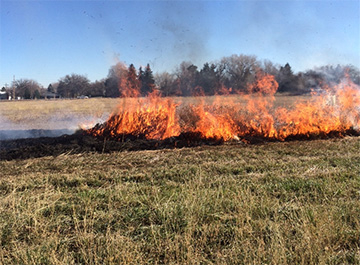
The Natural Areas Department engages in routine noxious weed control on all sites that they manage. Weed management actions are based on the integrated pest Management (IPM) philosophy: a combination of chemical, mechanical, cultural, and biological treatments. Herbicides are selected for use based on lowest environmental toxicity, selectivity to the target species, and effectiveness. Fire is unlikely to be used as a tool in weed management on these small, urban sites surrounded by dense residential areas. Grazing by domestic animals, particularly goats, may be done at these smaller Urban natural areas, to assist restoration or weed control efforts. Kestrel Fields has/will have grazing as part of the conservation agriculture program which may extend to other Urban sites as needed.
Wildlife#
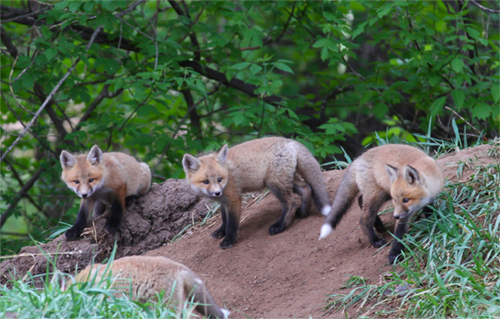
Fox kits, photo N. Keally
Wildlife species in the Urban Zone are the more common, human-adapted species that are important to keep common. It may also surprise some people to know what kinds of larger mammals find these small patches of habitat, connecting a pathway through town to larger natural areas on the east side of town. Several of the Urban Natural Areas are along the Spring Creek, which serves as a movement pathway for deer, fox, and the occasional mountain lion or bear. The Coterie is the only Urban Natural Area with prairie dogs as its name suggests. With the many native trees and shrubs found in the Urban Zone, along with the diversity of other horticultural plants at nearby residences, Urban Natural Areas are important habitats for a wide variety of birds and pollinators. The Nature in the City program hosts a community science monitoring program to track birds and butterflies on different types of land uses ranging from natural to developed. The findings are demonstrating the importance of small pockets of nature throughout Fort Collins as the study continues.
Rare Plants and Rare Plant Communities#
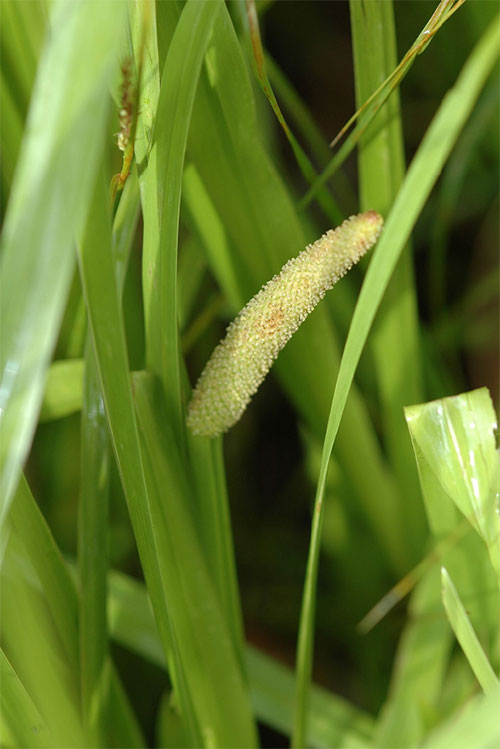
Acorus Calamus, photo C. Strouse
Small pockets of nature have an important role in conserving rare plants. Here are a few that have been documented within the Urban Natural Areas:
- Fireberry hawthorne (Crataegus chrysocarpa) (Puenta Verde)
- Cerro hawthorne (Crataegus erythropoda) (Fisher)
- Silver buffaloberry (Shepherdia argentea) (Redwing marsh)
- Sweetflag (Acorus calamus) (Ross)
Water Health/Resources#
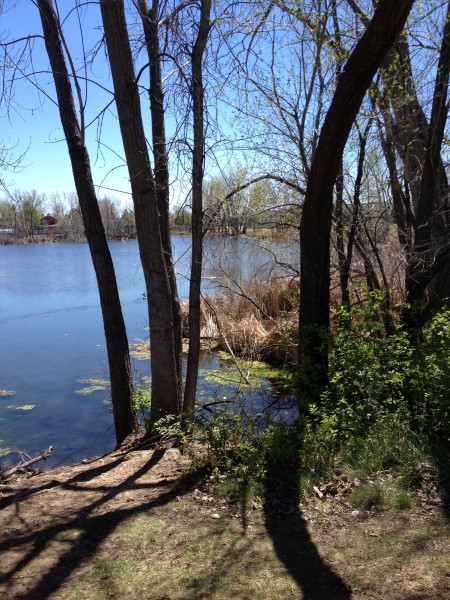
Many of the water resources that are part of the Urban Natural Areas are small ponds, streams, and drainageways that one may not know about unless you’ve been out exploring your neighborhood. Many of these areas are managed by the City Stormwater Utility, or private ditch companies. As noted earlier, these water features add to the habitat quality as well as the enjoyment of urban natural areas.
Scenic Resources#
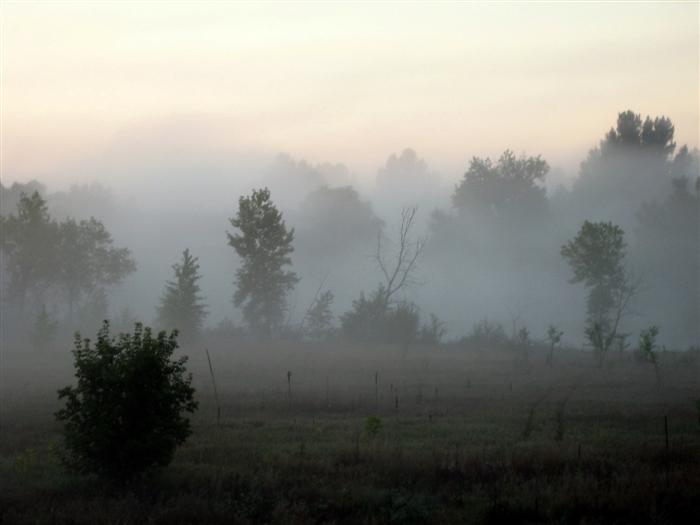
Urban Natural Areas provide a wonderful, close to home place to appreciate scenic and natural views. At night, they also provide critically needed pockets of darkness for both nocturnal animals, as well as diurnal animals that need the darkness to sleep well. These islands of natural space provide a break from city noises and commotion for both people and wildlife alike.
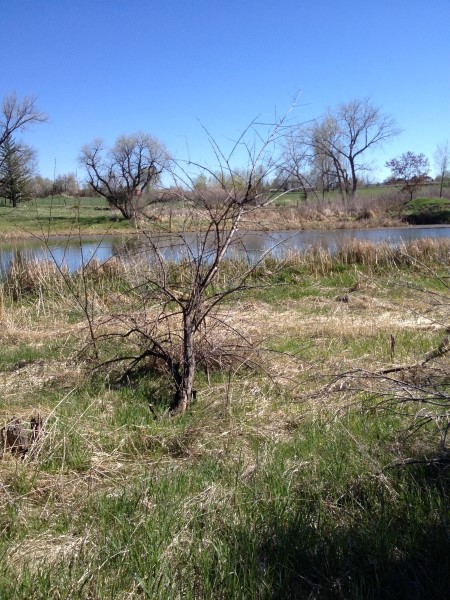
To date, no known pre-settlement cultural artifacts have been found on any of the Urban natural areas and little remains of any historic structures, with the exception of major water conveyance ditches that are still operational on four of the sites.
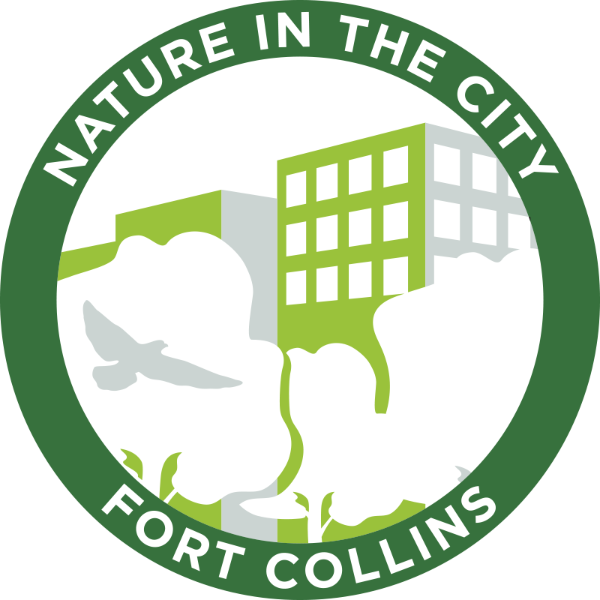
Urban Natural Areas provide access to nature close to homes and workplaces in our community, a goal of the Nature in the City Program (City of Fort Collins 2015). Time, location, and cost were the three greatest barriers to increasing access to nature identified in the “Plug in to Nature Study,” conducted in Larimer County (Design Workshop 2012). Urban Natural Areas help to fill this close location need for increasing everyone’s access to nature.
The conserved land in the Urban Zone is bolstered by efforts of community members. The Zone has 165 acres of private natural areas. The Natural Areas department encourages and provides resources for private landowners to manage their open spaces for wildlife, which expands the impact of the Natural Areas Department. To learn more about how community members can make a difference and build on existing conservation efforts, visit the Nature in the City webpage.
